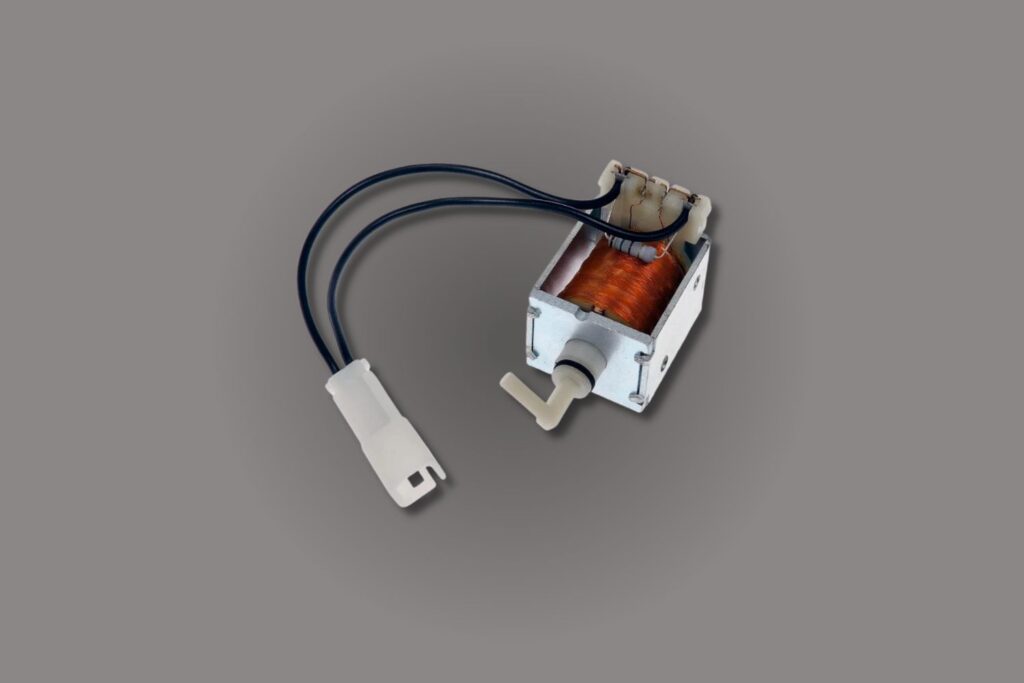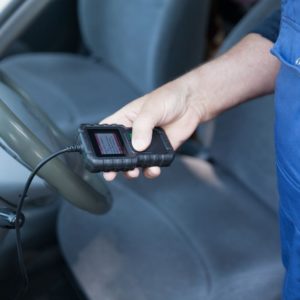Automatic transmission vehicles are equipped with a shift interlock solenoid that prevents the driver from shifting out of park unless the brake pedal is pressed. The solenoid prevents this by stopping the park gear from moving.
This protects the transmission parking pawl, which is a pin located inside the transmission that locks the output shaft when the gear lever is set to park. The parking pawl prevents the drive wheels from moving, acting as an emergency backup if the handbrake fails.
The shift interlock solenoid will also prevent the driver from shifting out of park if the ignition isn’t turned in the on position. The solenoid can detect whether the brakes are engaged by working with the brake light switch, which detects when the driver is pressing on the brakes. When the brake light switch is activated, then the shift interlock solenoid pulls out the rod that locks the gear lever.
Aside from pressing the brakes before shifting out of park, experts also recommend using the parking brake before shifting into park. This is done to avoid damaging the transmission or other internal components, especially when parking on a hill. This process prevents the entire weight of the car from being placed on the parking pawl, making it easier to move the gear selector out of the park position.
The shift interlock solenoid has a similar function to the neutral safety switch in that they prevent certain vehicle functions if the gear lever isn’t in the proper position. The neutral safety switch prevents the vehicle from starting unless the gear lever is set to neutral or park. However, the neutral safety switch works differently. Unlike the shift interlock solenoid, which moves a rod, the neutral safety switch simply completes a circuit that connects the battery to the starter motor if the gear lever is set in the proper position.

What Are the Signs of a Faulty Shift Interlock Solenoid?
Like any vehicle component, a shift interlock solenoid can show symptoms when it becomes faulty. Luckily, diagnosing a faulty shift interlock solenoid is simple. If your shift lever won’t move out of the park position, then it’s most likely caused by a faulty brake light switch. This is the component responsible for activating the brake lights when the driver presses on the brake pedal. If you have a gear lever stuck in park, the first thing you should do if your brake lights activate when you press the brake pedal. If this is the case, then the possible cause for the stuck gear lever could be the brake switch or its circuit.
A stuck gear lever could also be caused by a faulty shift interlock solenoid. It typically doesn’t show any other symptoms because it isn’t involved in other vehicle functions.
The most common cause of the vehicle not coming out of park is the brake light switch.
–Anthony Harlin, ASE Certified Master Automobile Technician
This can still be a major issue because a locked gear lever won’t allow you to move your vehicle at all. Luckily, most vehicles have a shifter release button located near the gear shift lever or center console. This button is designed to release the gear lever from the park position if this issue occurs.
A gear lever that’s stuck in park can also be caused by a flat battery. Without power from the battery, the solenoid won’t be able to pull the pin, locking the lever in place. Luckily, having a flat battery will show many symptoms, such as difficulty starting and having non-functioning electronics. Hence, you can easily rule out a flat battery as the cause.

Where Is the Shift Interlock Solenoid Located?
The shift interlock solenoid can be found under the shifter console, typically directly beside the shift lever. Replacing a shift interlock solenoid typically involves removing the center console. However, if your vehicle has a column-mounted shifter, then the shift interlock solenoid would be located inside the steering column.
How Much Does a Shift Interlock Solenoid Replacement Cost?
A replacement shift interlock solenoid may cost you anywhere between $50 and $100 on parts alone. Labor costs may vary depending on the standard rates in your area. Expect to pay anywhere between $100 and $120 on labor.
Any information provided on this Website is for informational purposes only and is not intended to replace consultation with a professional mechanic. The accuracy and timeliness of the information may change from the time of publication.
































